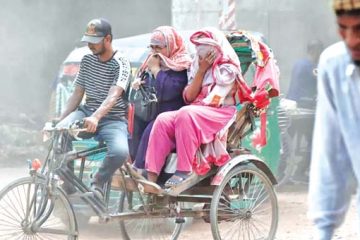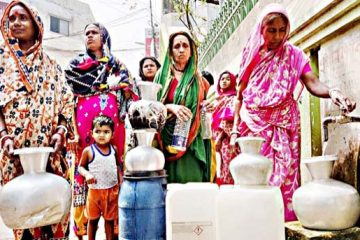Hassanuzzaman
 DR. Manmohan Singh has indeed proven himself to be the king of South Asian leaders by repeating history after nearly five decades. The Indian National Congress (INC) won a landslide victory in which it, along with its allies, now holds 262 seats in the parliament.
DR. Manmohan Singh has indeed proven himself to be the king of South Asian leaders by repeating history after nearly five decades. The Indian National Congress (INC) won a landslide victory in which it, along with its allies, now holds 262 seats in the parliament.
Singh’s entry in 1991 as the finance minister of India was at a time when the East and West were being reintegrated. Furthermore, the EU, which is an economic and political union of 27 states located primarily in Europe, was established through the Treaty of Maastricht in 1993 — building upon the pre-existing European Economic Community.
Overall, the decade of the 1990s witnessed a period where economics triumphed over politics, i.e., the notions of free market and capitalism overrode the visions that were perceived to be true under a communist system.
In 1991, India was facing an economic crisis. Singh initiated the economic liberalisation reforms program of 1991, which included dismantling of License Raj that made it difficult for private businesses to even exist, removal of many obstacles for FDI and initiation of the process of the privatisation of public sector companies. These economic reforms have been credited for bringing high levels of economic growth in India and increasing the annual 2%-3% average growth to 8%-9% economic growth in the following years. Not surprisingly, many scholars have declared Singh as the father of India’s economic reforms.
The most controversial period of Singh’s tenure was the time the Indian government decided to work with the US in a nuclear deal, which was signed by the respective leaders in October 2008. The most decisive issues persist with regard to allowing India to maintain a strategic reserve of nuclear fuel. Many Indian critics had also raised fears that such a deal would undermine India’s sovereignty.
The last WTO ministerial meeting took place during his tenure. Relations had improved with Japan, the EU and the UK. New Delhi also hosted an India-Africa Summit in April 2006, which was attended by the leaders of 15 African states. As a result of the ongoing Doha Round of trade negotiations, which began in 2001 under auspices of the WTO, the formation and subsequent proliferation of diversified country groups such as the NAMA-11 demonstrate the willingness of countries to cooperate with each other in trade-related matters. Though there have been a few diplomatic hitches between India and Russia in recent times, relations between the two remain strong through agreements to increase defence, nuclear energy and space cooperation.
Dr. Singh had presided over a period when the Indian economy grew with at 8%-9% rate. It is worth more than a trillion dollars today. He did not neglect the programs that were started by the preceding government, and continued the golden quadrilateral and the highway modernisation program. In the context of balance of payments, which had remained disturbing during the 1990s decade, it had more than doubled between FY06 and FY07.
His policies were also successful in saving India from the effects of the global “agflation,” which had caused riots in many countries in 2008. Today, the economy of India today is the twelfth largest in the world by market exchange rates and the fourth largest by GDP measured on purchasing power parity (PPP) basis.
With regard to poverty alleviation, the most significant contribution by Singh’s government have been the enactment of the Right to Information (RTI) act and the National Rural Employment Guarantee Scheme (NREGS) in 2005. The RTI covers the whole of India, excluding Jammu and Kashmir. It is applicable to all constitutional authorities, and in the backdrop of the proliferation of self-help groups (SHGs) and intensification of NGOs’ activities in India, such an act is certain to bear the desired fruits by building a check and balance system.
The other significant step by Singh’s government has been the launching of the national employment programs, i.e., the National Rural Employment Guarantee Act (NREGA). Even though the outreach and effectiveness of the NREGA is being contested, it has contributed to consolidating the support for the rural poor and, more importantly, empowering them in order to help them overcome the vicious cycles of poverty.
The first and foremost lesson to draw from India’s election results is that of being re-elected. The Bangladesh government’s vision of digitising Bangladesh by 2021 and ensuring food and job security are commendable commitments, and need be realised within its tenure. Bangladesh’s politics can be said to be restraining the country’s progress.
Furthermore, one of the crucial messages emanating from this year’s Indian elections is that of Singh’s inclination towards persuading the rising star of the Nehru dynasty — Rahul Gandhi — to join the cabinet. It is worth highlighting here that Mr. Gandhi has been playing a proactive role in Indian politics for quite sometime now, and he has addressed more rallies than the PM and Mrs. Gandhi together since 2004.
Will the current Bangladesh government be re-elected in 2013 and, more importantly, are we capable of thinking of a political scene that does not include the traditional faces? Time will certainly be the decisive factor and, more importantly, so will the voters.
In both India and Bangladesh, newly elected governments have enjoyed the support of a new breed of voters; for now, it can only be hoped that their aspirations for an encouraging future do not evaporate amidst the political games being played both within and between the parties, and that a third face emerges who can at least be compared to Rahul Gandhi.
Hasanuzzaman is a researcher at the Centre for Policy Dialogue (CPD). The author is solely responsible for the views expressed in this article.







